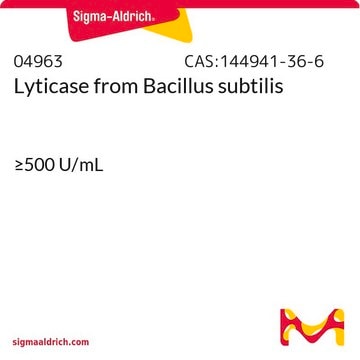V900418
Biotin
Vetec™, reagent grade, ≥99%
Synonym(s):
D-Biotin, Bios II, Coenzyme R, Vitamin B7, Vitamin H
About This Item
Recommended Products
grade
reagent grade
product line
Vetec™
Assay
≥99%
form
powder
color
white to off-white
mp
231-233 °C (lit.)
storage temp.
2-8°C
SMILES string
[H][C@]12CS[C@@H](CCCCC(O)=O)[C@@]1([H])NC(=O)N2
InChI
1S/C10H16N2O3S/c13-8(14)4-2-1-3-7-9-6(5-16-7)11-10(15)12-9/h6-7,9H,1-5H2,(H,13,14)(H2,11,12,15)/t6-,7-,9-/m0/s1
InChI key
YBJHBAHKTGYVGT-ZKWXMUAHSA-N
Looking for similar products? Visit Product Comparison Guide
General description
Biochem/physiol Actions
Legal Information
Storage Class Code
11 - Combustible Solids
WGK
WGK 1
Flash Point(F)
Not applicable
Flash Point(C)
Not applicable
Choose from one of the most recent versions:
Already Own This Product?
Find documentation for the products that you have recently purchased in the Document Library.
Customers Also Viewed
Active Filters
Our team of scientists has experience in all areas of research including Life Science, Material Science, Chemical Synthesis, Chromatography, Analytical and many others.
Contact Technical Service




